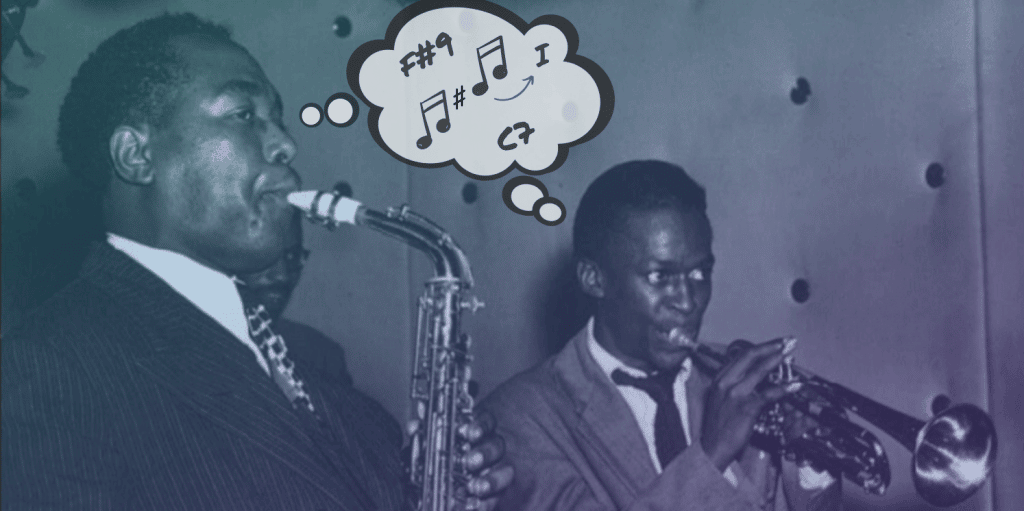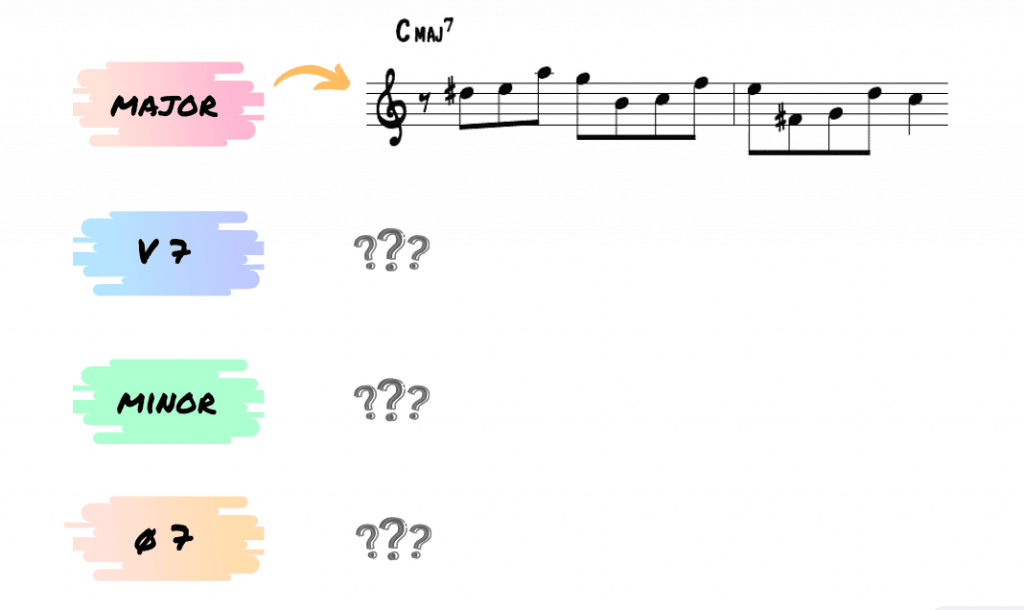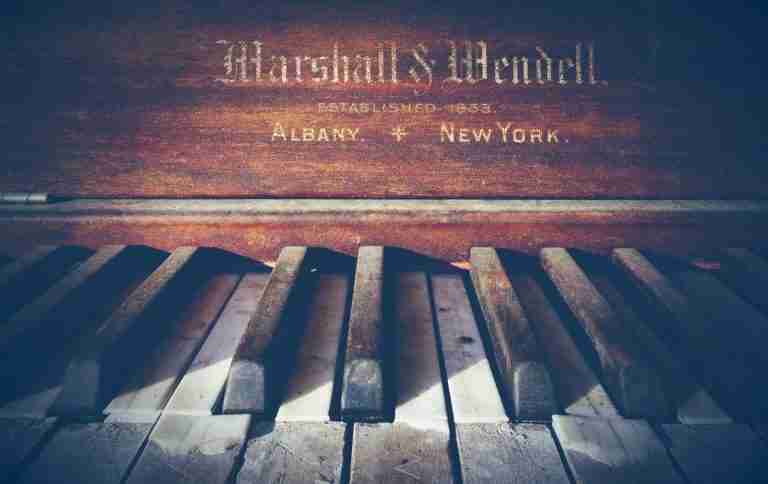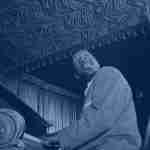Have you ever noticed how there’s a special group of improvisers that seem to know EXACTLY what to play over any tune at any time – no matter what it is? The key doesn’t matter, the tempo doesn’t matter, even the style of music doesn’t matter…
You could blindfold them, fly them to a jam session halfway around the world, call an obscure tune, and they would somehow be able to create flowing melodic lines that sound great every time.
What is it about these players that makes them different from the rest of us? Do they possess a special gift? Are they just talented? Or, do they know something the rest of us don’t??
Surprisingly, the answer is yes!
The players that can effortlessly create musical lines regardless of the tune or the key actually are thinking differently from the average improviser.
And this is something they’ve learned to do through practice and experience. An approach to music and improvisation that fosters creativity and musicality instead of the rigidity of theory rules.
The good news is that this is a skill that you can develop in your playing – but practice as usual is not going to get you there. Improvement here requires a change in the way you think…and you can do this without even touching your instrument.
The way you think about chords, conceptualize a progression, or approach your favorite tune has a direct effect on the way you’ll improvise. If you want to change the way you solo, you need to change the way you think!
Below we’ll show how the traditional approach to jazz chords and tunes is holding you back, and how 4 simple steps will transform your mindset to the level of a Pro…
How Most People Think about Chords

Beginners, musicians frustrated with improvisation, and the players that are struggling to improve are thinking about jazz chords and progressions in largely the same way…
They are stuck in a chord/scale approach to improvisation. To see what I mean, take the opening progression to a tune like Cherokee:

The default way that many players would approach this standard chord progression is centered around a corresponding scale or arpeggio for every single chord in the tune…

Bb Major = Bb Major scale. Ab7 = Ab mixolydian scale. And so on and so forth…
This is exactly how I used to think about chords and the progressions to jazz standards. For years I would memorize a series of chords names in one key and try to think through a scale for each one to create a solo.
I’ll Remember April would start with a G Major scale, All the Things with an F minor scale. If I wanted to play the tune in another key I’d have to start over from scratch, memorizing a new set of chords. And each time I’d struggle to come up with melodic lines and connect the chords…
If this process sounds familiar, you’re not alone! It’s because the typical approach to jazz education and jazz theory pushes us right into the chord/scale mindset of improvisation.
Here’s why this mindset/approach is holding you back:
- It ignores your ears! You’re thinking about the theory of individual chords and scales rather than hearing them.
- Your solo is limited to what you can memorize or think about on the fly – improvising depends on how fast you can think of notes to play.
- Your musical options are limited to scales, ignoring rhythm, shape, and the other stylistic elements of melody.
- By isolating one chord at a time, you’re missing the larger chord relationships and progressions, making it difficult to connect chords & create flowing lines.
The solos that you hear with this mental approach often sound disjunct. Every tune becomes a collection of individual chords and scales that all start to sound the same, because they’re created using the exact same approach.
If you’re stuck in this place however, it doesn’t mean that you can’t improvise or that you have to settle for mediocre solos – you simply need to change the way you’re thinking about the building blocks of the jazz repertoire…
How the pros think about chords

The chord/scale approach is ok as a start in the practice room…
It’s the first step in learning the structure of chords, practicing them in different keys, and memorizing progressions.
But when it’s actually time to start making music, creating melodic lines, and improvising phrases over chord progressions you need a different approach and a different mindset.
And this is where the pros separate themselves from everyone else – they’re approaching music differently! While frustrated players are obsessing over scales and chord names, great players are thinking about music and melody!
In this lesson we’ll show you how you can too…
I) Thinking of & Hearing Chord Quality
The first part of breaking free from this chord/scale mindset is changing how you think about the chords in the tunes you’re playing…
You need to transition away from thinking about memorized chord names and scales, and start identifying chord quality by sound.
To move beyond memorizing individual G7, AbMaj7, and B-7 chords to hearing dominant sounds, major sounds, and minor sounds.
Remember, the techniques for playing a Major chord are the same in any key, just as it is for minor or V7 chords…Once you have technique and can visualize chord structure in all keys, the name or key of the chord doesn’t matter!
The first thought a Pro has when they hear a progression or a tune isn’t scales or theory – it’s sound. And for great players, this sound quality is instantly recognizable!
The crucial piece of the puzzle here is ear training. You need to get your ears to the next level, i.e., ingraining the sound of each chord quality so you can immediately recognize it on the fly in any tune you play.
The good news is that there aren’t hundreds of chords that you need to learn and memorize – there are four common chords that pop up in the jazz repertoire:
- Major – minor – dominant – half-diminished
If you can instantly recognize these chord qualities in any tune you play, you’re laying the groundwork for the first step of musical success. *Interested in quickly improving your ears? Check out the Ear Training Method here.

Let’s put this into context with the opening of Cherokee once again. Instead of thinking of individual chord names, this time listen to the progression in terms of chord quality:

Now you’re hearing the sound of the chords. This is the first step on the road to improvising the melodic lines that you hear.
Think about it, this progression contains the same quality of chords in any key, whether it’s in Bb or F#. When you start focusing on the sound of the chord quality instead of the theory, the key doesn’t matter!
* (You can also play a ii-V in the 3-4th and 7-8th bars, but more on that later…)
The majority of jazz standards that you’ll play are composed of these four basic types of chords, whether it’s the Blues, It Could Happen to You, All the Things You Are, or Confirmation…
Remember, you don’t have to reinvent the wheel each time you play a new tune. The same basic building blocks are in every jazz standard – you simply need to hear them! Give it a try with a jazz standard that you’re familiar with, maybe I Hear a Rhapsody…
Instead of trying to recall the memorized progression right away and going down the path of scales and chord names, focus on the sound quality of each chord…
Listen to the tune with this new perspective. Forget the key, the chord names, and the scales – can you hear Major, minor, V7 and ø7 chords??
II) Language – what do you have to play over these chords??

Now that you’re simplifying the way you think about all of these chords, the next question you need to ask yourself is this…
What do I have to play over each of these sounds??
We’re not talking about scales and arpeggios here, but actual melodic ideas!
This is where your musical approach and ideas come from – the start of where your solo is going to take shape. Think of these four basic chord qualities, what can you play over them right now?

If you only have a scale or an arpeggio, you’re still stuck in the analytical theory mindset of trying to improvise.
This is where the important concept of language comes into play. Over each of these chord types you need to develop specific melodic & harmonic techniques, a starting point for melodic improvisation…
The goal is to approach chords and progressions from a melodic standpoint rather than a theoretical one. Musical ideas that can be developed rather than cut and paste scales…
The concept of language is the one thing that many struggling improvisers are missing! It’s the stepping stone that will lead you from scales and theory to actually playing and improvising melodic ideas.
So where do you find or develop language?
The best place is this through transcription – listening to and learning the solos of great improvisers! But you can also gather ideas from your favorite tunes or simply develop ideas on your own. Check out our guide to jazz language to get started.
As a baseline, aim to have 10 pieces of language for each chord type…10 ideas that you can play on major, 10 starting points for minor chords, etc.
You might get some minor language from Clifford Brown, some dominant ideas from a few Blues solos, or Major techniques from your favorite player.
Remember, these are not licks in one key, but musical concepts, techniques, and melodic devices that you can use in any key over any tune. Melodic ideas that you can vary, alter, and improvise with.
Want to bridge the gap between the chord/scale mentality and melodic improvisation with a step-by-step course? Check out Melodic Power here.

If you’ve been thinking of getting started on your jazz language journey, this course is a great way to begin.
III) Chord Function & Common Progressions
Up to this point you’ve learned to focus on the sound & quality of chords and the importance of developing melodic tactics for these sounds…
The next step is understanding how these individual chords function within the larger context of a tune, how each chord relates to the next in one key.
In the same way that there are basic chord qualities that are used over and over again, there are common chord progressions that happen in nearly every jazz standard.
The chords in a tune don’t exist in a vacuum – they’re related to each other and have a specific function within the tune. Understanding this relationship is key to improvising a solo!
To see what I mean, let’s go back to the opening of Cherokee…this time looking at how each of the chords function within the key of Bb:

How does each chord relate to the tonic key? How does one chord move to the next? Where are the arrival and transition points in the chord progression??
Look at the chords in terms of function rather than chord name, (I chord, IV chord, ii-V-I) etc. This will get you focused on the diatonic function of the chords within the key.
Here, Bb is the I chord, Eb is the IV chord, and F7 is the V7 chord. And certain chords are borrowed from other tonalities (I7, bVII, II7), but resolve back to strong chords in the tonic
In this tune the major chords also serve as arrival points, while the dominant chords serve as transition points, resolving to upcoming chords. I7 resolves to the IV chord, bVII7 resolves to I, etc.

Get accustomed to thinking about and hearing where are the arrival points are in a progression and how are you getting there – this is the secret to creating melodic lines that make sense.
The nice thing is, the more tunes you learn and analyze in this fashion, the more you’ll see the same chord progressions and chord relationships popping up over and over again.
Just as with individual chords, the key to improvising is ingraining the sound of these chord progressions in your ear!
And If you want go further into understanding chord function and all the deep relationships that exist in jazz, make sure to check out our course Jazz Theory Unlocked.

*A note on Implied ii-V’s
Let’s take a second to talk about V7 chords and ii-V’s…
In the 3-4 bars and 7-8 bars of Cherokee you’ll commonly see a ii-V progression played by the rhythm section or implied by soloists. The I7 chord becomes a ii-V7 to IV (F- Bb7) and the bVII7 chord becomes a “backdoor ii-V” (Eb- Ab7) to I:

Why does this work??
With any V7 chord you can imply the related ii-V. (Bb7 vs. F- Bb7) In other words you can approach these as two bar dominant 7 chords or as a two bar ii-V7. They essentially have the same function and can be used interchangeably.
IV) Language & Techniques for Common Progressions

Along with developing language for individual chords, you also need to develop language for the common chord relationships that pop up in every jazz standard…
Just like Major or minor chords, if you don’t have any melodic starting points or techniques for these common progressions you’re going to have a hard time improvising melodic lines over standards!
Here are 4 important progressions and chord relationships that you should start focusing on in the practice room today:
1) The ii-V-I progression

The ii-V-I progression is one of the most common progressions in the jazz repertoire and the perfect place to start learning some language for functional progressions.
Nearly every solo that you transcribe will contain some ii-V language, isolate these spots and figure out the concepts that catch your ear.
Wondering where to begin? Here are 25 ii-V-I lines every player should know…
2) Minor ii-V’s and Turnarounds

Building on the concept of ii-V language, you should continue with learning language for minor ii-V’s and turnarounds. You’ll encounter these progressions in nearly every important standard that you learn.
Check out this lesson for some language examples for turnarounds.
3) Moving from the I to the IV chord

The relationship of the I chord to the IV chord is central to the jazz repertoire. It’s in the blues, Cherokee, Rhythm Changes, and countless other standards. Here are some techniques for moving from the I to the IV chord.
4) Moving from Major to parallel minor

Finally, you should spend some time ingraining and learning language for the major to parallel minor relationship. You’ll find this progression in numerous standards, as well as tunes like Green Dolphin Street, I’ll Remember April, and Four.
Check out this lesson on moving from Major to parallel minor.
Aim to have techniques for both shorter language (individual chords) vs. longer language (progressions) and mixing or combining the two. Remember, every larger progression is built from the individual chords.
If you can instantly identify these progressions by ear and you have language for each situation, there’s no standard that you can’t play!
Where to go from here…
Take a second to think about how you’re approaching improvisation today…
Are you still trying to play tunes by memorizing individual chord names? Are you struggling to improvise over a chord progression with scales??
If you’re frustrated with your playing, a simple change in your mental approach might be just what you need.
Remember, the best improvisers are thinking about the building blocks of the jazz repertoire differently than the average player…
The moment they hear a tune they recognize the sound of the chords, they can instantly identify common progressions by ear, and they have a wealth of language for the chords & progressions that occur in every tune.
…this all happens simultaneously in the blink of an eye, and to the average listener this can seem like magic! But the truth is these are skills that every musician can acquire.
Skills that you can develop with a little work in the practice room…
It all starts with mastering these 4 simple steps.










